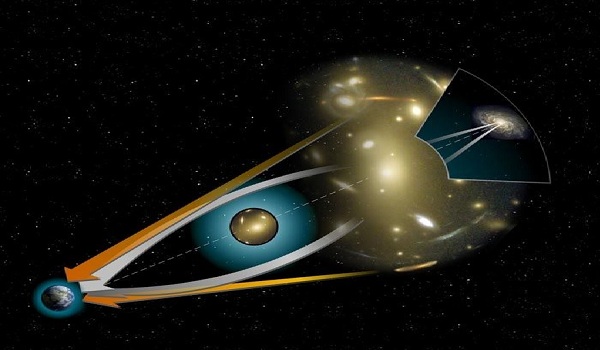- Astronomers recently discovered a surprising, rare example of an “Einstein Cross” splitting and amplifying light from the distant depths of the universe.
- In this, a giant elliptical galaxy about 6 billion light-years away from Earth distorts and quadruples a bright beam of light coming from a background galaxy located behind it and about 11 billion light-years away from our planet. Divides into parts and makes a cross.
Why are these so rare
- It turns out that gravitational lensing happens everywhere in the universe, mostly in the form of so-called “weak lensing”.
- Creating an Einstein Cross requires a precise alignment of the lensing body and light source and astronomers refer to this as “strong gravitational lensing”.
What is Gravitational Lensing
- It occurs when a massive celestial body, such as a galaxy cluster, causes a sufficient curvature of spacetime for the path of light around it to be visibly bent, as if by a lens.
- The body causing the light to curve is accordingly called a gravitational lens.
- An important consequence of this lensing distortion is magnification, allowing us to observe objects that would otherwise be too far away and too faint to be seen.

